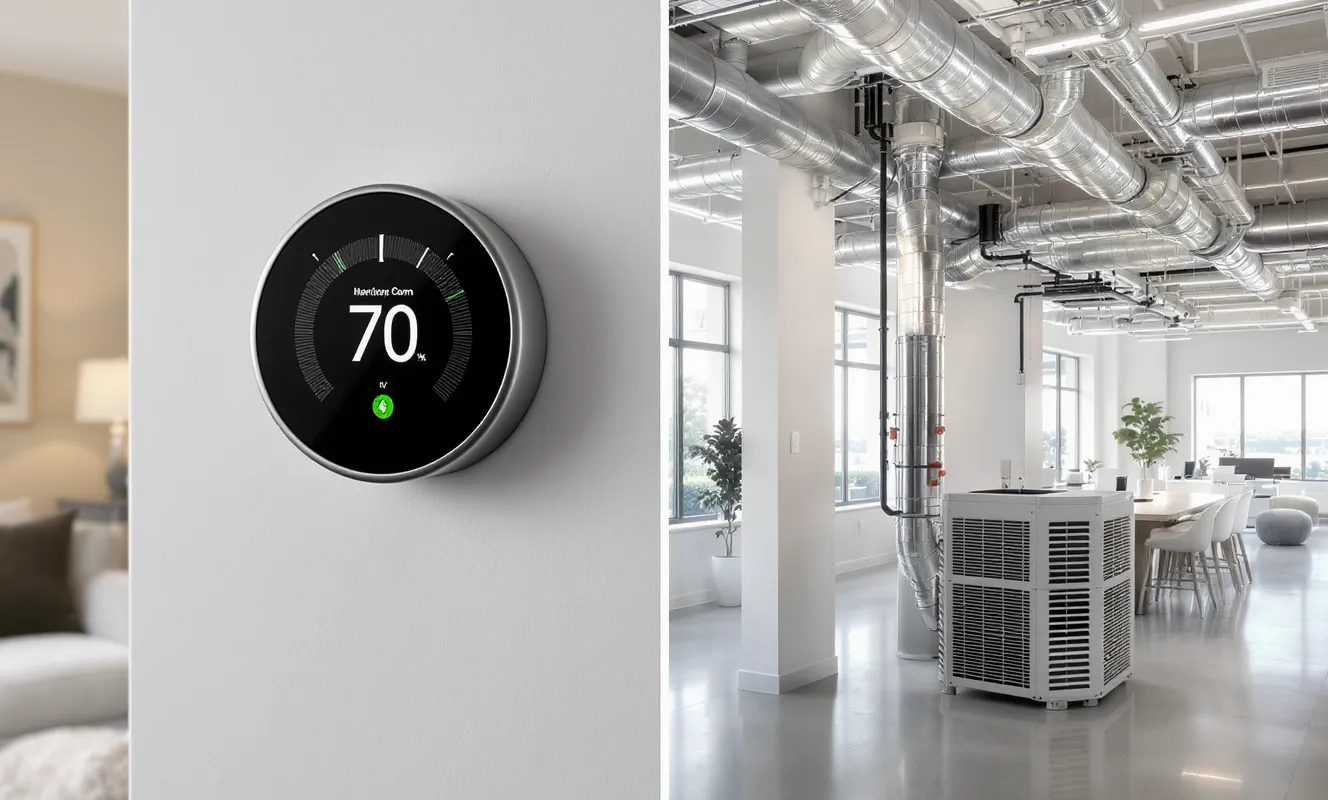
Heating and cooling take up a huge chunk of energy use in most homes and businesses—over half, in fact. That means even small improvements in your HVAC energy efficiency can translate into big savings and greater comfort.
In this guide, you’ll find proven strategies to maximize the efficiency of your existing HVAC system—without the cost of a full replacement. Whether you’re a homeowner cutting utility bills or a business meeting energy compliance targets, these practical tips, expert insights, and real-world examples can be applied today.
Even without replacing your HVAC, strategic maintenance and smart thermostat programming can reduce energy use by up to 20%.
HVAC energy efficiency reflects how effectively your system turns energy into heating or cooling. The less waste, the better. Efficiency is commonly measured by SEER (Seasonal Energy Efficiency Ratio) for cooling and AFUE (Annual Fuel Utilization Efficiency) for heating.
For both residential and commercial systems, poor efficiency typically traces to five culprits: dirty filters, leaky ducts, outdated controls, poor insulation, and neglected maintenance.
| Factor | Impact on Efficiency | Potential Savings |
|---|---|---|
| Dirty Filters | Blocks airflow, forces system to work harder | $50–$150/year |
| Leaky Ducts | Loses conditioned air before it reaches rooms | $200–$500/year |
| Old Thermostat | Inefficient temperature control | $100–$300/year |
| Poor Insulation | Increases HVAC workload | $300–$600/year |
| Neglected Maintenance | Allows wear and inefficiency to build up | $150–$400/year |
Each issue above can cost hundreds annually—and most are fixable without replacing the entire system.
Maintenance isn’t glamorous, but it is the single biggest factor in keeping your HVAC efficient. Add these essentials to your checklist:
Retrofitting older HVAC systems with modern, energy-efficient components is one of the fastest ways businesses can cut operational costs and lower carbon emissions.
Smart thermostats deliver quick wins with features like geofencing, occupancy sensing, and adaptive scheduling. By aligning temperature setpoints with actual usage, they cut waste while maintaining comfort.
Sealing ducts and improving insulation reduces load and stabilizes comfort. In some homes, duct leaks can waste up to 30% of airflow; in commercial spaces, poor insulation forces the system to fight outdoor temperatures all day.
You don’t need a full system replacement to capture modern efficiency gains. Consider targeted upgrades:
These upgrades often pay back in 2–3 years through reduced energy costs.
Poor airflow creates hot/cold spots and wasted energy. Keep supply and return vents unobstructed and ask a pro to balance the system.
Signs of imbalance: rooms that never reach setpoint, noticeable pressure when doors close, or persistent temperature stratification.
Zoning divides the building into separate climate areas with individual thermostats. It’s ideal for multi-story homes and spaces with uneven occupancy.
A local retail store cut annual HVAC costs by 35% by installing a smart thermostat, sealing duct leaks, and adding insulation above drop ceilings. Upfront cost was under $2,000, with payback in just over a year.
Extreme weather strains HVAC systems. Avoid performance dips with simple seasonal steps:
Businesses face tighter codes and higher stakes. Strengthen your program with:
Maximizing HVAC energy efficiency isn’t about spending big—it’s about consistent, targeted actions:
With these strategies, many homes and businesses cut energy costs by 20–40%, extend equipment life, and improve comfort. Schedule a maintenance check and build a prioritized efficiency plan for the year.
Yukos Mechanical has served New York and the Tri-State area since 2003, helping homeowners and businesses improve HVAC efficiency with smart upgrades, balancing, and preventive maintenance.
Replace filters, seal duct leaks, clear vents, and install a programmable or smart thermostat. These steps deliver quick, measurable savings.
Every 1–3 months depending on usage, pets, and indoor air quality. Dirty filters restrict airflow and increase energy use.
Yes. By aligning setpoints with occupancy and using adaptive schedules, many homes see up to 10–20% lower HVAC energy use.
No. Maintenance, duct sealing, insulation, and selective component upgrades can deliver substantial savings without a full system replacement.
Rooms that never reach setpoint, pressure when doors close, and persistent hot/cold spots suggest a balancing adjustment is needed.
Our clients trust us for fast, reliable HVAC solutions—see their stories below!


Whether you’re planning a new system or just need service advice, our team is here to help—no pressure, no obligations.